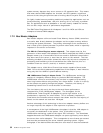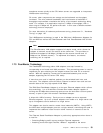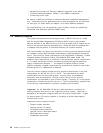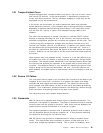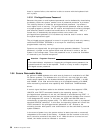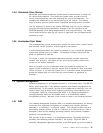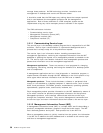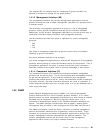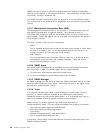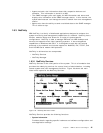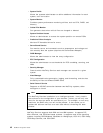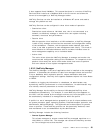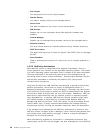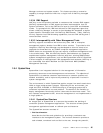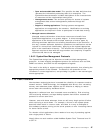SNMP provides a means of communicating between the network management
stations and the agents in the network resources. This information can be status
information, counters, identifiers, etc.
The SNMP manager continuously polls the agents for error and statistical data.
The performance of the network will be dependent upon the setting of the polling
interval.
1.9.2.1 Management Information Base (MIB)
The Management Information Base is a collection of information about physical
and logical characteristics of network objects. The individual pieces of
information that comprise a MIB are called MIB objects and they reside on the
agent system. These MIB objects can be accessed and changed by the agent at
the manager′s request.
The MIB is usually made up of two components:
•
MIB II
This a standard definition which defines the data layout (length of fields, what
the field is to contain, etc.) for the management data for the resource. An
example would be the resource name and address.
•
MIB Extension
This incorporates unique information about a resource. It is defined by the
manufacturer of the resource that is being managed. These are usually
unique and proprietary in nature.
1.9.2.2 SNMP Agent
The SNMP agent is responsible for managed resources and keeps data about
the resources in a MIB. The SNMP agent has two responsibilities:
1. To place error and statistical data into the MIB fields
2. To react to changes in certain fields made by the manager
1.9.2.3 SNMP Manager
An SNMP manager has the ability to issue the SNMP commands and be the end
point for traps being sent by the agent. Commands are sent to the agent using
the MIB as a communication vehicle.
1.9.2.4 Traps
In a network managed with SNMP, network events are called traps. A trap is
generally a network condition detected by an SNMP agent that requires
immediate attention by the system administrator. It is a message sent from an
agent to a manager without a specific request for the manager.
SNMP defines six generic types of traps and allows definitions of
enterprise-specific traps. This trap structure provides the following information:
•
The particular agent object that was affected
•
Event description(including trap number)
•
Time stamp
•
Optional enterprise-specific trap identification
•
List of variables describing the trap
In summary, the following events describe the interactions that take place in an
SNMP-managed network:
40 NetWare Integration Guide



